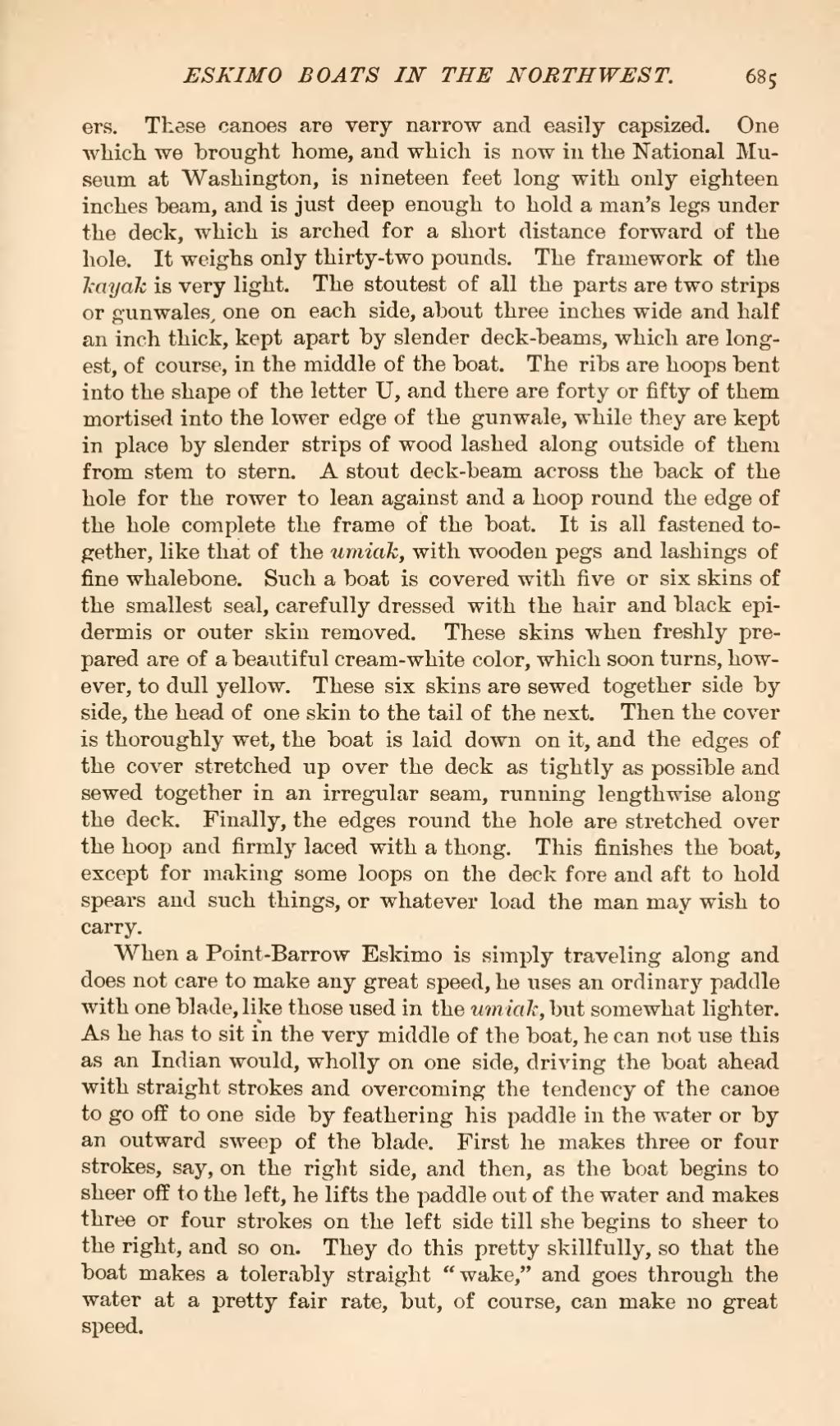ers. These canoes are very narrow and easily capsized. One which, we brought home, and which is now in the National Museum at Washington, is nineteen feet long with only eighteen inches beam, and is just deep enough to hold a man's legs under the deck, which is arched for a short distance forward of the hole. It weighs only thirty-two pounds. The framework of the kayak is very light. The stoutest of all the parts are two strips or gunwales one on each side, about three inches wide and half an inch thick, kept apart by slender deck-beams, which are longest, of course, in the middle of the boat. The ribs are hoops bent into the shape of the letter U, and there are forty or fifty of them mortised into the lower edge of the gunwale, while they are kept in place by slender strips of wood lashed along outside of them from stem to stern. A stout deck-beam across the back of the hole for the rower to lean against and a hoop round the edge of the hole complete the frame of the boat. It is all fastened together, like that of the umiak, with wooden pegs and lashings of fine whalebone. Such a boat is covered with five or six skins of the smallest seal, carefully dressed with the hair and black epidermis or outer skin removed. These skins when freshly prepared are of a beautiful cream-white color, which soon turns, however, to dull yellow. These six skins are sewed together side by side, the head of one skin to the tail of the next. Then the cover is thoroughly wet, the boat is laid down on it, and the edges of the cover stretched up over the deck as tightly as possible and sewed together in an irregular seam, running lengthwise along the deck. Finally, the edges round the hole are stretched over the hoop and firmly laced with a thong. This finishes the boat, except for making some loops on the deck fore and aft to hold spears and such things, or whatever load the man may wish to carry.
When a Point-Barrow Eskimo is simply traveling along and does not care to make any great speed, he uses an ordinary paddle with one blade, like those used in the umiak, but somewhat lighter. As he has to sit in the very middle of the boat, he can not use this as an Indian would, wholly on one side, driving the boat ahead with straight strokes and overcoming the tendency of the canoe to go off to one side by feathering his paddle in the water or by an outward sweep of the blade. First he makes three or four strokes, say, on the right side, and then, as the boat begins to sheer off to the left, he lifts the paddle out of the water and makes three or four strokes on the left side till she begins to sheer to the right, and so on. They do this pretty skillfully, so that the boat makes a tolerably straight "wake," and goes through the water at a pretty fair rate, but, of course, can make no great speed.

